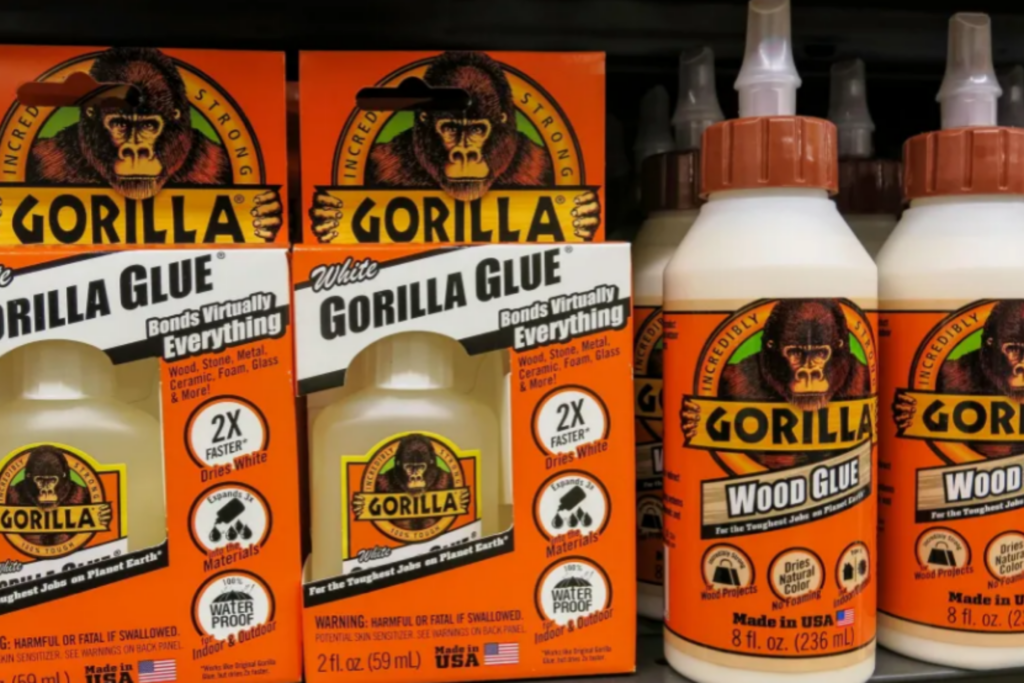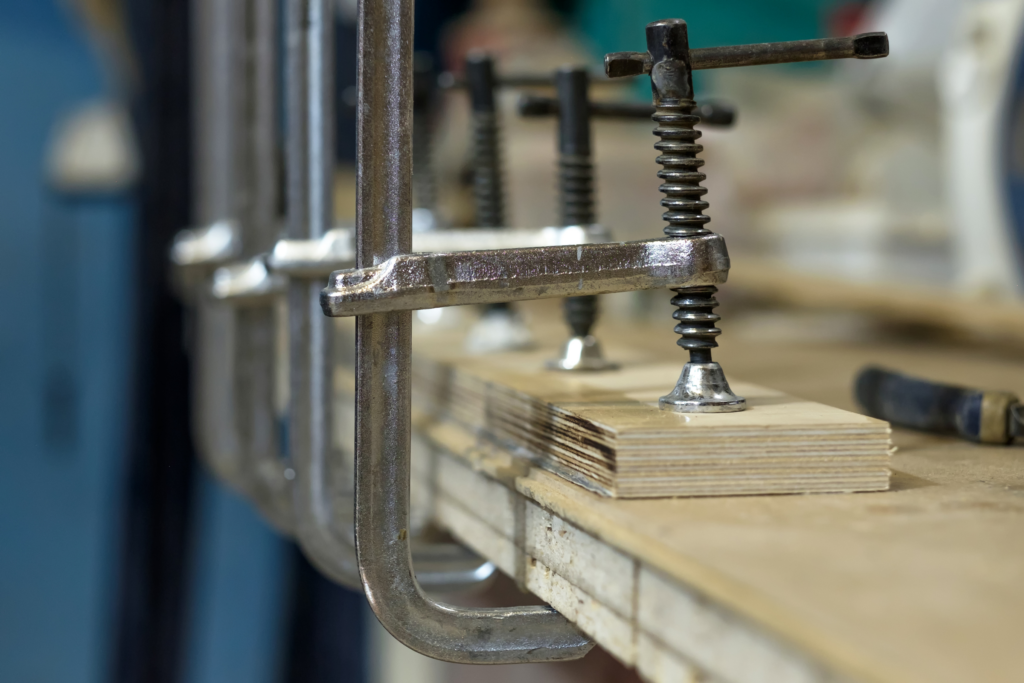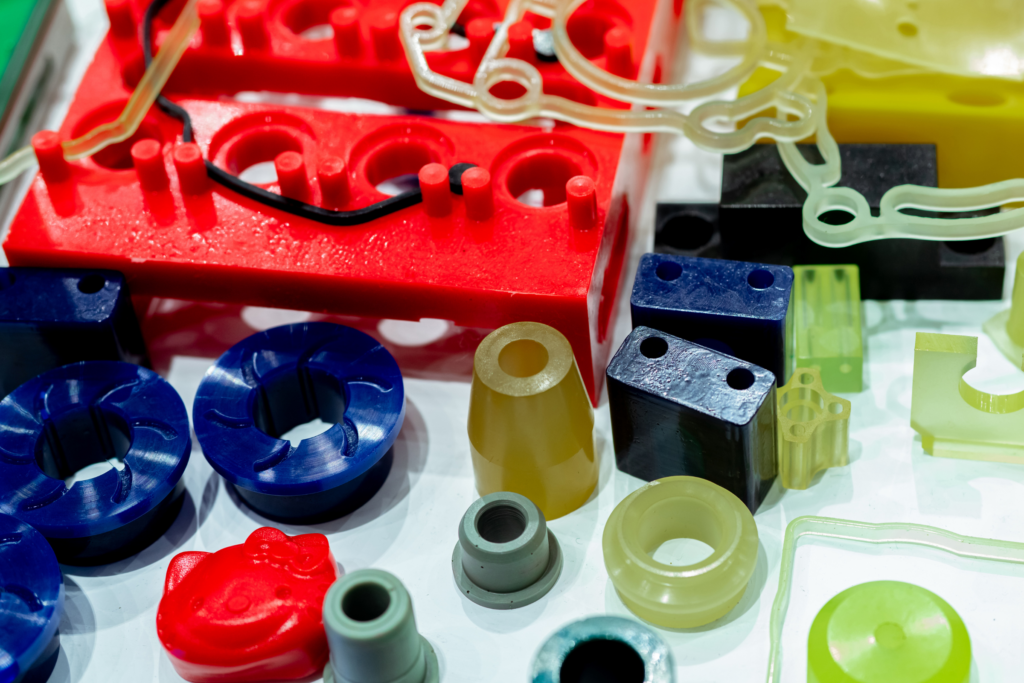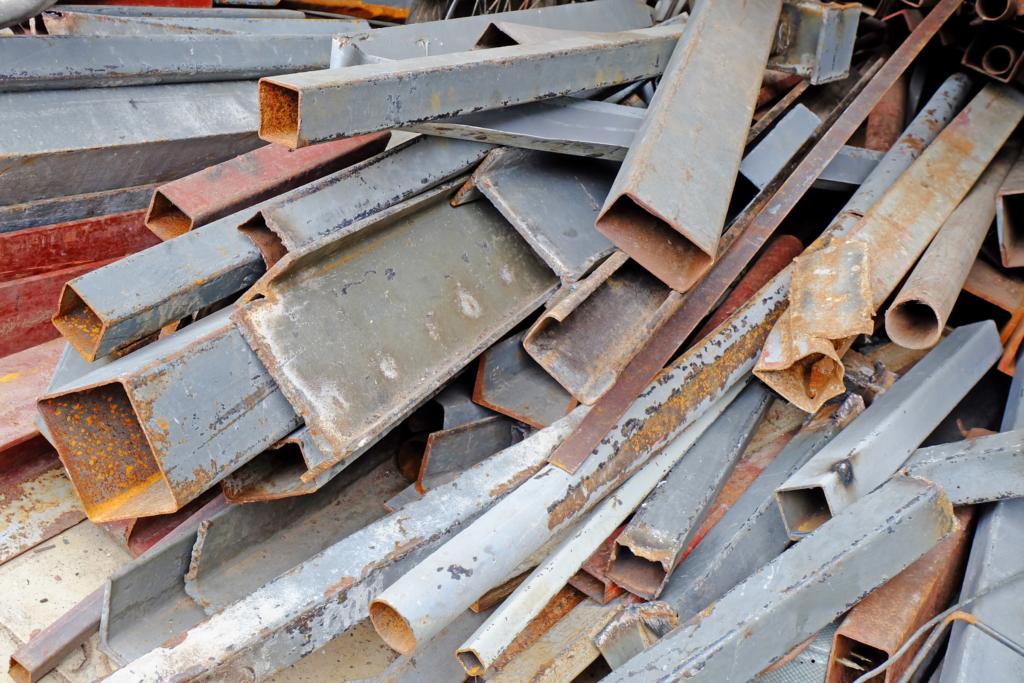Will Original Gorilla Glue Work Without Water? (How It Works + Helpful Tips)
As you may already know, Original Gorilla Glue is a popular adhesive known for its strength and versatility. With its ability to bond various materials such as wood, stone, metal, ceramic, foam, glass, and concrete, it’s no surprise that Gorilla Glue has become a go-to product for many DIY enthusiasts and professionals alike.
One of the more interesting aspects of the Original Gorilla Glue product is that they recommend you use a little water to activate the glue, allow it to expand, and ensure the best results.
But will Original Gorilla Glue work without water?
Gorilla Glue works best when a small amount of moisture is present on the surfaces to be bonded, but interestingly, there is usually sufficient moisture in the air for Gorilla Glue to cure without needing to dampen the materials. In fact, using less water can result in less foaming, which some users find beneficial. For best results overall, lightly dampen the surface you are gluing.
Let’s dive a little deeper into why Original Glue needs water and uncover some helpful tips for getting the best results with it along the way!
Why does Original Gorilla Glue need water to work?
Original Gorilla Glue is a moisture-activated polyurethane adhesive – that is a fancy way of saying that it needs a little water to work properly.
This type of adhesive is known for its versatility, strength, and waterproof properties along with the ability to bond various materials together, such as wood, stone, metal, ceramic, foam, glass, and concrete. One of the key features of Gorilla Glue is that it is 100% waterproof, meaning it can withstand exposure to outdoor elements without breaking down.
The strength of Gorilla Glue comes from its expanding nature. When applied to a surface with moisture present, it activates and expands three times into the materials, creating an incredibly strong bond between them.
Additionally, it is both cold and heat resistant, allowing the bond to hold even through hot and cold temperatures.

The role of water with Original Gorilla Glue
Moisture-activated polyurethane adhesives, often simply referred to as polyurethane adhesives or PURs, require the presence of moisture to initiate and complete their curing process.
Water plays a significant role in the mechanism and properties of these adhesives like Original Gorilla Glue:
- Curing Mechanism: The isocyanate groups present in polyurethane prepolymers react with water to produce a chemical crosslinking reaction. This reaction generates carbon dioxide and leads to the formation of urea linkages, which help in solidifying the adhesive and forming a bond.
- Adhesive Performance: The presence of moisture not only activates the curing process but also helps in achieving the desired properties of the adhesive. When moisture is adequately absorbed, the adhesive can achieve its optimal strength and flexibility.
- Tackiness: Moisture can influence the tack or stickiness of the adhesive. In some formulations, the presence of moisture can increase the tackiness, allowing for better initial bonding.
- Application: When applying moisture-activated polyurethane adhesives, it’s sometimes necessary to introduce a slight amount of moisture (for instance, by lightly misting one of the bonding surfaces) if the environment is too dry. This ensures the adhesive cures properly.
- Environment Sensitivity: The requirement for moisture means that the performance of these adhesives can be affected by environmental conditions. In extremely dry conditions, the adhesive might not cure properly, while in overly humid conditions, too rapid a reaction might occur, leading to bubbles or blisters due to the rapid evolution of carbon dioxide.
- Flexibility: The reaction with moisture often imparts flexibility to the cured adhesive, making it suitable for bonding materials that experience movement or stress.

How to apply Original Gorilla Glue for best results (with water)
When working on a DIY project or repair, it’s important to know how to apply Original Gorilla Glue correctly.
Follow these steps for the best results:
- Prepare the surfaces: Ensure the surfaces you are bonding together are clean, dry, and free of dirt or debris.
- Moisten one surface: Original Gorilla Glue requires moisture to activate curing. While ambient humidity may be sufficient in some cases, it is recommended to dampen one surface lightly with water before applying the glue.
- Apply the glue: Spread a thin layer of Gorilla Glue on the dry surface. Keep in mind, the glue expands 3 times as it cures, so don’t over-apply.
- Press together and clamp: Carefully align the two surfaces and press them together. Use clamps to hold the pieces securely in place during the curing process. The glue sets in about 1-2 hours and fully cures in 24 hours.
- Clean up: To avoid skin irritation, wear gloves during the application. In case of skin contact, wipe off excess glue with a dry cloth and wash the area with soap and cold water.
Applying Gorilla Glue at the proper temperature is essential for the best bond. The ideal application temperature is between 40°F and 100°F (5°C and 38°C) but works best at room temperature.
Note that extreme temperatures can affect the bonding and curing process. With the right application techniques and conditions, Original Gorilla Glue can form a strong bond even without manually adding water.
It can securely bond a variety of materials, making it a versatile choice for various projects.
What if you forgot to dampen before using Gorilla Glue?
If you forgot to dampen the surfaces before using Gorilla Glue (or other similar moisture-activated polyurethane adhesives), you might encounter some issues:
- Slower Curing Time: One of the primary effects of not dampening the surfaces is that the glue may take longer to cure. The moisture in the air can still activate the adhesive, but it’s typically less efficient than directly dampening the surfaces.
- Weaker Bond: The bond strength might be compromised. Moisture activates polyurethane adhesives and helps them expand and penetrate the bonding surfaces. Without sufficient moisture, the adhesive might not penetrate as deeply or expand as much, leading to a potentially weaker bond.
- Incomplete Curing: In very dry conditions, there’s a possibility that the glue might not cure properly or might remain tacky for an extended period.
If you’ve already applied the glue and cannot separate the items without causing damage, you might have to wait and see if the bond is strong enough for your needs. If you can separate the items safely, you can clean off the uncured adhesive, dampen the surfaces, and reapply the glue for optimal bonding.
Does Original Gorilla Glue work on plastic materials?
When it comes to using Original Gorilla Glue on plastic materials, it’s essential to know that it works well on most types, but not all. Specifically, it doesn’t work well on plastics containing polyethylene or polypropylene. These plastics are difficult to bond due to their low surface energy and high resistance to adhesion.
Before applying Gorilla Glue to plastic, ensure the surface is clean, dry, and dust-free. This will help promote a strong bond between the glue and the plastic material. The presence of any plasticizer content could also weaken the bond, as these additives can interfere with adhesion.

Do you really have to wait 24 hours for Original Gorilla Glue to dry?
Setting and curing times are essential when using Gorilla Glue. In about 1-2 hours, the glue will begin to set, allowing you to reposition and adjust the bonded materials as needed. However, achieving full strength and maximum bond requires waiting up to 24 hours.
It is worth noting that Gorilla Glue is 100% waterproof and can handle exposure to moisture without having the adhesive bond fall apart. But remember, this is only applicable after the glue has fully dried and cured.
How Original Gorilla Glue bonds on different surfaces
Gorilla Glue is a versatile adhesive designed to work on various surfaces, making it ideal for numerous projects. Before you start, make sure the surfaces are clean and free of dust, grease, or oil to ensure better adhesion.
Wood
Gorilla Glue works well with porous surfaces like wood, providing strong bonds between dense hardwoods as well as softer woods. Remember to dampen the wood slightly with a cloth before applying the glue.
Metal and Ceramic
These non-porous surfaces require a small amount of moisture to ensure the glue cures correctly. Lightly mist the metal or ceramic surface, apply the glue, and hold the pieces together until the bond is secure.

Plastic and Rubber
For plastics and rubbers, apply the glue sparingly and evenly. Hold the pieces together, ensuring proper alignment before the glue starts to cure.
Glass and Stone
Gorilla Glue holds up well on glass and stone, bonding securely even on smooth surfaces. Apply the adhesive evenly and press the two parts together, supporting them until the bond is stable.
Concrete
When bonding concrete, make sure the surfaces are clean and slightly damp. Then, apply the glue, maintaining pressure between the pieces for a strong bond.
Foam and Paper
Although the glue works on foam and paper, use caution as the glue could seep through and damage the material. Apply Gorilla Glue carefully and in small amounts to porous surfaces, and avoid excessive pressure during bonding.
Remember, Gorilla Glue expands as it cures, filling gaps and creating a stronger bond. It’s essential to clamp or support the bonded surfaces until the glue is completely dry. By following these simple steps, you’ll successfully bond various materials for your projects with confidence.
Extra Features of Gorilla Glue
Original Gorilla Glue is known for its versatile and durable nature. In addition to its water-activated properties, it offers several other features that make it suitable for a wide range of applications, both indoor and outdoor.
Indoor and Outdoor Usage
Gorilla Glue is designed to withstand various environmental considerations. It is 100% waterproof and temperature resistant, ensuring the bond stays strong through hot and cold temperatures. This makes it ideal for projects in both indoor and outdoor settings.
Sandable, Stainable, and Paintable
After Gorilla Glue has cured, you can easily modify the surface to meet your desired appearance. It can be sanded, stained, or painted, allowing you to seamlessly blend it with the materials you are working on.
Gap Filling and High Bond Strength
Gorilla Glue expands up to three times its size as it cures, filling gaps within the materials, and ensuring a strong and long-lasting bond. The cured color of the adhesive is tan, which may be helpful in certain projects to blend it with the surrounding materials.
Compatibility with Various Materials
This adhesive naturally works well on a range of materials such as wood, stone, metal, ceramic, foam, glass, and concrete. Its ability to bond with diverse materials makes it a popular choice among homeowners and professionals alike.
For different Gorilla Glue products such as Gorilla Super Glue or Gorilla Epoxy, the working time, cure time, and other features may vary. Gorilla Super Glue, for instance, is known for its quick bonding time of 60 seconds, and Gorilla Epoxy allows light handling after 30 minutes. Make sure to choose the appropriate Gorilla Glue product for your specific project requirements.
How to remove Original Gorilla Glue
When you need to remove Gorilla Glue, it’s essential to act quickly and use appropriate techniques to preserve your surfaces and skin. Here are a few methods to consider:
- Uncured Gorilla Glue: If the glue is still wet, you can use a clean rag or paper towel to wipe away the excess glue. After that, wash the area with soapy water to remove any remaining residue.
- Soapy water: For glue that has dried on skin or other surfaces, try soaking the affected area in a basin filled with warm water and a tablespoon of dish soap for at least 5 minutes. After soaking, gently scrub the area with a sponge or washcloth. You may need to repeat this process a few times to fully remove the glue.
- Acetone or nail polish remover: Acetone can help loosen the bond between the glue and the surface. However, it should be used with caution, as it can also damage certain materials and dry out your skin. You should only use acetone in a well-ventilated area, and always follow the manufacturer’s instructions. Apply the acetone to a cloth or cotton swab and gently dab the area where the glue is present, then wipe away once the glue has softened.
- Goo Gone: This product is specially formulated to remove sticky residues, including Gorilla Glue, without damaging surfaces or drying out your skin. Simply apply Goo Gone to the affected area, let it sit for a few minutes, and then wipe away with a clean cloth or paper towel.
Remember that patience is key when it comes to removing Gorilla Glue. These methods may require multiple attempts or a combination of techniques to achieve the best results. Always test the chosen method on a small, inconspicuous area before applying it to the entire surface to ensure it won’t cause damage.
Important safety notes when using Original Gorilla Glue
When using Original Gorilla Glue, it’s important to take certain safety measures to protect yourself. This adhesive is known for its strength and waterproofing ability, but it is classified as harmful if inhaled and irritating to your skin and eyes.
- Protecting Your Skin and Eyes To avoid skin irritation, it’s a good idea to wear gloves when handling Gorilla Glue. If the glue happens to come in contact with your skin, you can try using alcohol, acetone, or a gentle solvent to remove it.
- Inhalation and Ingestion Avoid inhaling Gorilla Glue fumes, as prolonged exposure may be harmful. Work in a well-ventilated area or use a respirator mask to reduce the risk of inhaling the adhesive. If you accidentally inhale the fumes and experience dizziness, headache, or difficulty breathing, move to fresh air and seek medical attention.
- Heat and Cold Exposure The adhesive is flammable, so avoid exposing it to extreme heat or open flames. Store Gorilla Glue in a cool, dry place away from sources of heat. On the other hand, using this adhesive in cold temperatures might affect its bonding ability, so ensure your working environment is within the recommended temperature range.
Let Us Know How We’re Doing!
Did this expertly prepared resource answer your question?
Do you have another question about home maintenance, home improvement projects, home appliance repair, or something else?
Get more information, send in questions and keep the discussion going by contacting the I’ll Just Fix It Myself company customer service team at at 1-800-928-1490 or Email us at [email protected]
